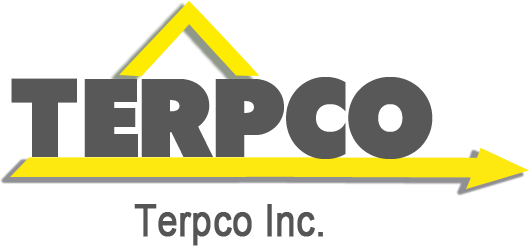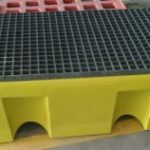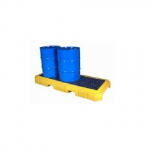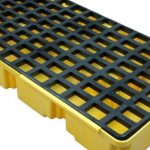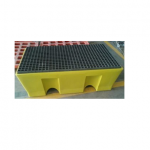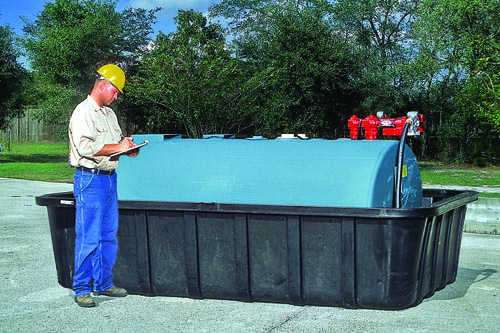
Spill containment
Answer: Secondary containment systems and devices can satisfy several different regulatory requirements. They’re not very useful, however, if they aren’t maintained and kept in good condition. Regular inspections are required by several regulations to ensure these systems and devices continue to be a proactive pollution prevention measure, but most of the regulations allow the facility to establish its own inspection intervals.
Facilities subject to the Environmental Protection Agency’s stormwater regulations must have a Stormwater Pollution Prevention Plan that describes the procedures, practices and measures the facility will take to prevent pollutants from entering storm drains and the nation’s waterways. Secondary containment is one of the most common best management practices that facilities use to prevent pollution. When listed as a BMP, a thorough Stormwater Pollution Prevention Plan will include an inspection schedule and details of what is to be inspected. Although no inspection interval is specified in the rule, inspections should be conducted often enough to ensure the secondary containment systems are still reliable.
EPA’s Spill Prevention Control and Countermeasures Rule allows several different types of secondary containment systems, including sumps, curbing, dikes, absorbents, booms and ponds. No matter what types are employed, the facility must inspect them in accordance with industry standards or other recommended practices. Depending on the type of secondary containment system, this can range from daily inspections for permanent systems that provide secondary containment for aboveground storage tanks to monthly or biannual inspections of absorbent supplies. Frequencies for inspections must be documented in the facility’s written SPCC plan.
Secondary containment also is required in areas where containers or tanks of hazardous waste are stored. Whether waste is stored in tanks or in containers that are aggregated in central accumulation areas, each area where hazardous waste is stored needs to be inspected at least weekly to look for leaks from the primary containers, as well as any situation that would cause the secondary containment structure to fail.
Inspections may also be an element of a facility’s process safety management plan or risk management plan. Whether secondary containment is used to satisfy the requirements of one regulation or several, it’s important that inspections happen in accordance with whatever interval is specified in the facility’s written plans. It’s also essential to keep documentation that inspections are being completed. These can be stored in paper form or electronically, and they need to be readily accessible to prove compliance during audits.
Read more: Spill containment
